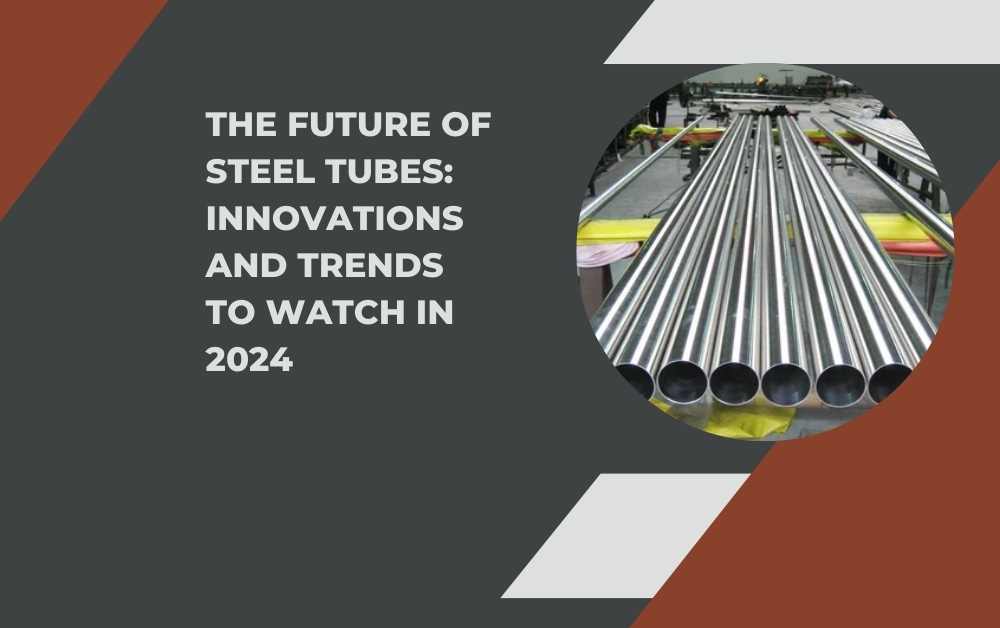Steel tubes have been a crucial component of various industries for decades, providing structural support, transportation solutions, and more. As we step into 2024, the landscape of steel tube manufacturing is undergoing significant changes, driven by technological advancements, sustainability goals, and evolving consumer demands. In this blog post, we will explore the innovations and trends shaping the future of steel tubes in 2024 and beyond.
1. Advanced Materials
Leveraging Cutting-Edge Materials for Enhanced Performance
In 2024, manufacturers are increasingly turning to advanced materials to improve the performance and durability of steel tubes. One such material gaining traction is advanced high-strength steel (AHSS), which offers superior strength and lighter weight compared to traditional steel. By incorporating AHSS into their products, manufacturers can create steel tubes that are not only stronger but also more fuel-efficient, making them ideal for applications in automotive and aerospace industries.
2. Sustainable Manufacturing Practices
Embracing Sustainability in Steel Tube Production
Sustainability is a key focus for the steel industry in 2024, and manufacturers are adopting innovative techniques to reduce their environmental footprint. One notable trend is the rise of electric arc furnaces (EAFs) in steel tube production. Unlike traditional blast furnaces, EAFs produce steel using scrap metal, significantly reducing energy consumption and emissions. Additionally, manufacturers are investing in renewable energy sources such as solar and wind to power their operations, further enhancing the sustainability of steel tube manufacturing.
3. Additive Manufacturing
Revolutionizing Production with 3D Printing
Additive manufacturing, commonly known as 3D printing, is transforming the way steel tubes are produced in 2024. This technology allows manufacturers to create complex geometries and customized designs with unparalleled precision. By eliminating the need for traditional machining processes, 3D printing reduces material waste and production time, making it a cost-effective solution for prototyping and small-batch production. As 3D printing technology continues to advance, we can expect to see widespread adoption of this innovative approach in the steel tube industry.
4. Digitalization and Industry 4.0
Embracing the Digital Revolution
The fourth industrial revolution, often referred to as Industry 4.0, is driving significant changes in the steel tube manufacturing sector. Digitalization and automation technologies are becoming increasingly prevalent, allowing manufacturers to streamline their operations and improve efficiency. In 2024, we can expect to see the widespread adoption of technologies such as artificial intelligence, IoT sensors, and predictive analytics in steel tube production facilities. These technologies enable real-time monitoring of equipment performance, predictive maintenance, and optimization of production processes, ultimately leading to higher quality products and reduced costs.
5. Customization and Personalization
Meeting Consumer Demands with Custom Solutions
In today’s market, consumers are seeking products that are tailored to their specific needs and preferences, and the steel tube industry is no exception. In 2024, manufacturers are increasingly focusing on customization and personalization to meet the diverse demands of their customers. Advanced manufacturing technologies, such as laser cutting and CNC machining, enable manufacturers to produce steel tubes in a wide range of sizes, shapes, and configurations. Whether it’s a unique architectural structure or a specialized component for a high-tech application, manufacturers have the capabilities to deliver custom solutions that precisely match their customers’ requirements.
6. Enhanced Surface Coatings
Protecting Steel Tubes for Longevity
Surface coatings play a critical role in protecting steel tubes from corrosion, wear, and other forms of damage. In 2024, manufacturers are developing innovative coatings that offer enhanced durability and performance. One emerging trend is the use of nanotechnology to create superhydrophobic coatings that repel water and prevent corrosion. These coatings not only extend the lifespan of steel tubes but also reduce maintenance requirements and operating costs. Additionally, manufacturers are exploring eco-friendly coating options that minimize environmental impact without compromising performance, aligning with the industry’s sustainability goals.
7. Integration of Smart Technologies
Building Smarter Steel Tubes
The integration of smart technologies is revolutionizing the functionality of steel tubes in 2024. Sensors embedded within steel tubes enable real-time monitoring of factors such as temperature, pressure, and strain, providing valuable data for performance optimization and predictive maintenance. Smart tubes equipped with IoT connectivity can communicate with other devices and systems, facilitating seamless integration into larger manufacturing processes and supply chains. By harnessing the power of smart technologies, manufacturers can enhance the reliability, efficiency, and safety of steel tube applications across various industries.
Conclusion
As we look ahead to the future of steel tubes in 2024 and beyond, it’s clear that innovation will continue to drive the industry forward. From advanced materials and sustainable manufacturing practices to additive manufacturing and digitalization, manufacturers are embracing new technologies and techniques to meet the evolving needs of their customers. By staying at the forefront of these trends, the steel tube industry is poised to deliver enhanced performance, durability, and customization options, ensuring its continued relevance in a rapidly changing world.
Note :- Read more related blogs at www.logicallyblogs.com.

